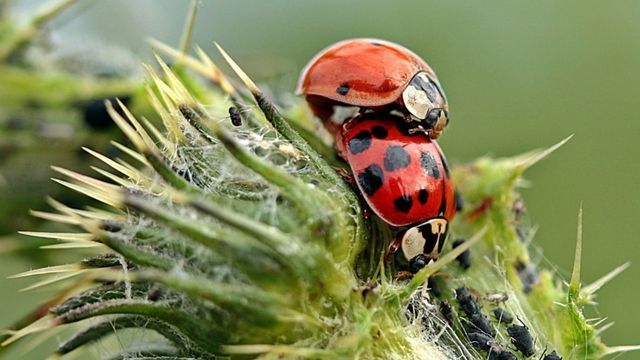Biocontrol for Greenhouses
Biological control refers to the use of some natural elements, as well as living organisms, in order to reduce pests and harmful insects.
These elements and organisms possess many advantages, for example, biological control cannot harm either the plant or
In humans, it also represents a permanent treatment for greenhouse pests, as a result of it being able to reproduce and grow continuously naturally.
Add to this its low cost compared to other methods, not to mention chemical control, which makes it the best option
Many farmers also do not need a lot of hands.
Examples of Biocontrol for Greenhouses
There are several examples regarding the use of biological control in greenhouses, specifically in the context of implementing some organic farming, including:
First: Toxic Bacteria
It is one of the types of pathogenic bacteria used to get rid of pests in greenhouses. These bacteria are in the form of crystals that contain an effective lethal substance.
Only once the insect ingests these crystals, its wall will dissolve and its active substance will begin to release its poison inside the insect.
Immediately, that insect dies within a period not exceeding 5 days from the start of the insect eating the crystal.
However, during this mentioned period, there is no effect on the plant, as the insect remains dormant until the result of the substance appears on it and dies.
These bacteria are also used against scale insects, such as cutworms, cotton leafworms, and others.
Second: Growth Regulators
They are some substances that affect the growth of the insect, as well as hinder it.
Third: male sterilization
That is, the males of some insects are sterilized, and then released, which leads to these insects laying unfertilized eggs, and thus the end or extinction of that pest.
This method is often used with fruit flies.
Safe alternatives to pesticides
It is one of the modern elements in the field of biological control of greenhouses, and these alternatives are biological compounds and natural elements that do not cause harm to humans, plants, or even animals.
It also contains less toxic substances compared to chemical pesticides.
However, in order for this type of safe pesticide alternative to be used, there must be a few degrees of infection, and it is also usable in the case of early detection of insect infections.
For example: ammonium sulfate, molasses, diesel, yeast, and agricultural sulfur.

